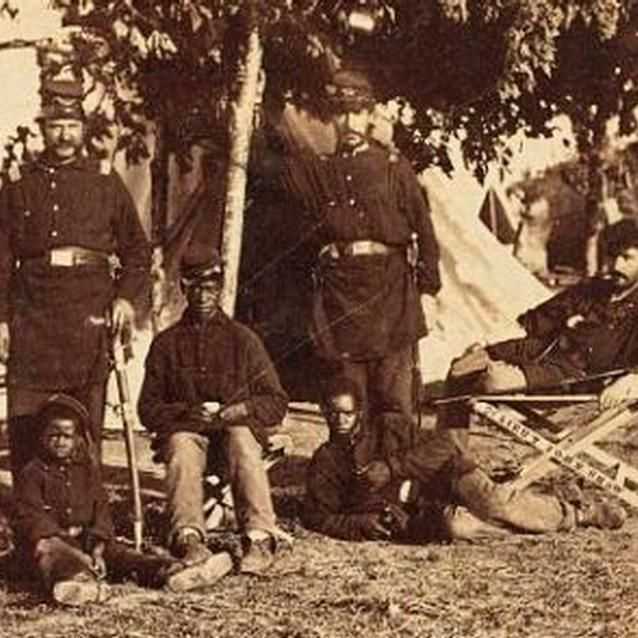As the war progressed and Union troops moved deeper into Virginia, African Americans began to leave their masters, seeking protection behind Union lines. By 1863, approximately 10,000 former slaves had come to Washington, primarily from Maryland and Virginia. The capital was not only a symbol of Union and freedom, but also an actual border which could be crossed to freedom.
"...the contraband were important to the construction and maintenance of the defense of Washington. Without the contrabands' numbers and labor, the defenses would not have been as successful as they were." Civil engineer Edward Frost

Library of Congress
At the start of the war, the Union had no policy to deal with the African Americans seeking protection. Individual commanders made their own decisions. Some commanders put them to work for Union troops while others returned them to plantation owners. At Fort Monroe in Hampton, Virginia, Union Maj. General Benjamin Butler refused to send three fugitives back into the bonds of slavery. He classified the escaping slaves as contraband of war. This term meant that once the fleeing slaves crossed Union army lines, they were classified as property. All enemy property that fell into Union hands constituted contraband and would not be returned. Because of Butler's actions, a federal policy was instituted on August 6, 1861 - fugitive slaves were declared to be "contraband of war" if their labor had been used to aid the Confederacy in anyway. If found to be contraband, they were declared free.
After arriving in Washington, former slaves worked as laborers on the fortifications. They worked for less money and were often exploited. In August of 1862, workers were paid 40 cents, plus rations, a day for work-often they were not paid at all. By November 1863, it was recommended that a sum of $1.00 per day to contraband was a fair wage. Additionally, it was recommended that records be kept in order to make sure these workers were treated fairly. While the troops did the majority of fort construction, contraband labor made a significant contribution.
The migration of former slaves to the nation's capital not only increased the city's population but also increased the burden on its infrastructure. Some of the freed slaves in the Washington, D.C. area built settlements which were the foundations for later African American neighborhoods. Two of these settlements were located in southern Anacostia near Battery Carroll and Fort Greble. The government established Freedman's Village on the former Custis-Lee estate in Arlington, Virginia. Freedman's Village was intended to house these refugees, train them in skilled labor, and educate freed children. The camp's grounds included an industrial school, a hospital, a home for the aged, churches, and several schools for children. Some historians claim that Freedman's Village was not intended to help integrate blacks into society but, instead, intended to segregate the former slaves from white society.
By the end of the Civil War, as many as 40,000 fugitives from slavery had made their way to Washington. Many of the freed men and women lived in and around the forts vacated between 1865 and 1866.
Last updated: August 15, 2017
